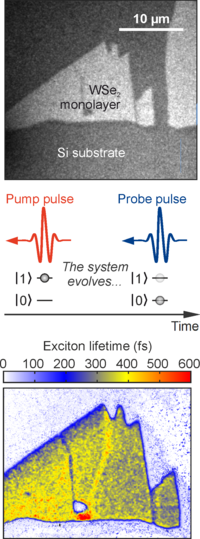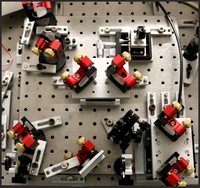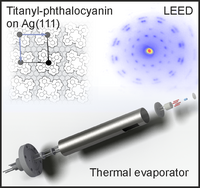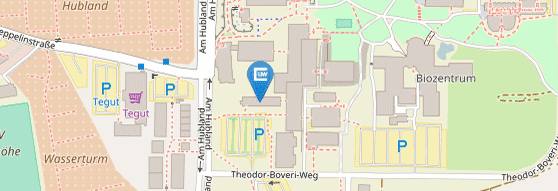Time-resolved spectroscopy in the nanoworld

In order to circumvent the optical diffraction limit of approx. 200 nm, in this project we do not image photons but photo-emitted electrons with an electron microscope and thus achieve a spatial resolution of approximately 3 nm. This makes it possible to selectively investigate the interaction of individual quantum systems on the smallest spatial scales, e.g., the energy transport between or within molecular aggregates. The research field of nano-optics, in which photons are localized at nanostructures and can be distributed to individual components at the speed of light, like on a chip, takes place on similarly small scales. Together with the possibility of coupling molecular systems to these nanostructures and thus influencing the molecular response to light excitation and the charge-carrier transport properties, it is not only possible to investigate fundamental phenomena of light–matter interaction in the nanoworld using 2D coherent optical spectroscopy, but also to develop cost-effective optoelectronic devices based on organic semiconductor materials.
A thesis in this project can cover many areas of research methods. Central, of course, is the planning and conduction of time-resolved experiments, which requires dealing with lasers and optical components. In addition, depending on the topic of the thesis,
- the preparation of molecular layer systems in ultra-high vacuum,
- the characterization of molecular structures using LEED and LEEM,
- the use of a photoemission electron microscope (PEEM),
- quantum dynamical simulations,
- building of optical setups,
- hardware control and programming,
- ... and much more.
If you are interested and have further questions, please contact us!
Contact:
Dr. Matthias Hensen, matthias.hensen@uni-wuerzburg.de
Literature for overview:
Completed theses
The topic of your thesis in our working group is always assigned based on the current research work in the laboratory. Therefore, it does not make sense to constantly post new open topics here. Just contact us! In order to get an impression of possible theses in this project, a selection of already completed theses is presented below.
Bachelor theses
Building of a mobile FROG setup for the characterization of femtosecond laser pulses

Ultrafast laser pulses, in which the optical energy is concentrated to a few femtoseconds, form the basis for tracking the dynamics of, e.g., molecular processes. But how do you actually know the duration of the laser pulse if there is no faster event than the pulse itself? In this work, a setup was built based on concepts known from literature, with which the temporal structure of the laser pulses can be reconstructed on the femtosecond time scale. The tasks included the assembly and adjustment of the optical components, as well as the control of the hardware and the programming of the measurement software. This setup is now the basis for the daily work in this project.
Preparation and characterization of long-range ordered organic thin film systems

To investigate the temporal dynamics of light-induced electronic excitations in molecular thin-film systems, these surface systems must first be prepared. Of particular interest is the question of what influence the order of the molecules has on these dynamics. The aim of this work was therefore to put into operation the evaporator for molecular beam epitaxy that had previously been set up in another bachelor's thesis and thus to enable the preparation of long-range ordered (mono)layers of titanyl phthalocyanine on an Ag(111) single crystal. The order of these structures was then characterized using electron diffraction (LEED) in the electron microscope. The results and experiences of this work, from the preparation of the single crystal substrate by argon sputtering to the adjustment of the electron optics in the electron microscope, form the basis for the future preparation of molecular surface systems.


